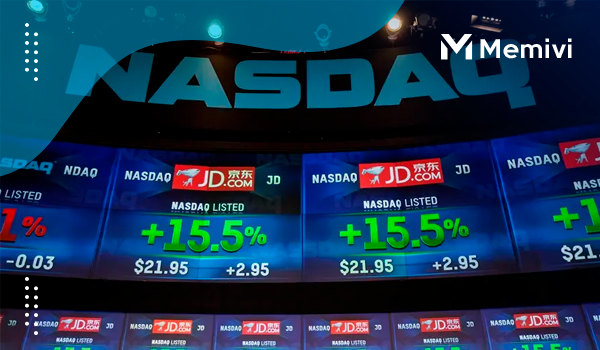
Have you ever wondered what American stock exchanges are and how they work? Let’s explore the key platforms where stocks are traded in the U.S., including major players like NYSE and NASDAQ. Understanding these can help you make informed decisions about investing and trading in the American markets.
Overview of Major U.S. Stock Exchanges
The major U.S. stock exchanges include the New York Stock Exchange (NYSE) and the NASDAQ. These platforms play a pivotal role in the global financial markets.
New York Stock Exchange
The NYSE is renowned for its prestigious listing standards and historical significance. Founded in 1792, it is located on Wall Street, New York City. The NYSE operates as an auction market where traders buy and sell on behalf of investors. NASDAQ Unlike the NYSE, NASDAQ is an entirely electronic stock exchange. Initiated in 1971, it is known for accommodating more technology-oriented companies. The order matching system used by NASDAQ provides a continuous trading period throughout the day. Together, these exchanges account for a significant portion of the world’s trading and are considered benchmarks for measuring market performance globally.
Differences Between NYSE and NASDAQ

The two largest stock exchanges in the United States are the New York Stock Exchange (NYSE) and the NASDAQ. Understanding the differences between them is crucial for investors. The NYSE, located on Wall Street in New York City, operates as an auction market. Buyers and sellers come together to agree upon a price for a stock. This involves human brokers and specialists who help facilitate trades.
On the other hand, NASDAQ is a fully electronic market where trading occurs on a network of computers. It matches buy and sell orders itself, which makes it more suitable for fast-paced trading. This speed often appeals to high-tech companies that list their stocks here.
Listing Requirements
The NYSE is known for its stricter listing requirements compared to NASDAQ. Companies wishing to list on the NYSE often need to meet higher standards related to financial stability and corporate governance. In contrast, NASDAQ offers listing tiers, making it accessible to a broader range of companies.
Types of Companies Listed
Generally, NYSE lists older, more established companies in traditional sectors. In comparison, NASDAQ is home to many tech giants and innovative companies. Think of companies like Apple, Microsoft, and Amazon.
Market Perception
The NYSE is often perceived as more prestigious due to its history and the profile of companies listed. Meanwhile, NASDAQ has cultivated a reputation for being forward-looking and dynamic.
Overall, the preference between trading on NYSE or NASDAQ depends much on an investor’s strategy, tech focus, and industry outlook. Each has its unique advantages catering to different business models and investor needs.
Minor U.S. Stock Exchanges and Their Roles
The minor U.S. stock exchanges play unique and vital roles in the broader American financial landscape. While major exchanges like NYSE and NASDAQ dominate the headlines, these smaller platforms offer significant opportunities and functions that should not be overlooked. Among them, exchanges like the IEX (Investors Exchange) provide innovative trading solutions focusing on transparency and fairness. Another minor exchange is the Chicago Stock Exchange (now part of the NYSE American), which offers a platform for small to midsize companies, enabling them to raise capital and grow.
Over-the-Counter (OTC) Markets
are another category, serving as key venues for more than 10,000 securities not listed on formal exchanges. These markets are divided into tiers, like OTCQX and OTCQB, where companies follow specific reporting standards.
Benefits for Investors
include access to a more diverse range of investment opportunities, with potentially high returns. However, these platforms may involve higher risks and require diligent research and understanding of market dynamics. They also cater to a specific segment of companies, often providing them a stepping stone to larger exchanges as they grow. Understanding these minor stock exchanges is crucial for a well-rounded approach to investing in the U.S. financial markets.
How to Invest in American Stock Markets
The American stock exchanges are central to the financial markets in the United States, playing a crucial role in the global economy. Several distinct exchanges serve different functions and cater to various segments of the investment community.
Major American Stock Exchanges
There are two primary stock exchanges in the U.S. that most investors are familiar with. The New York Stock Exchange (NYSE) is the largest and oldest, known for its physical trading floor and auction-style market. The NASDAQ, in contrast, is a fully electronic exchange known for its association with technology stocks and a faster execution model. Each of these exchanges provides unique opportunities for companies to raise capital and for investors to buy and sell shares.
Minor Stock Exchanges
Aside from these giants, there are smaller exchanges such as the American Stock Exchange (AMEX) and regional exchanges. The AMEX historically specializes in derivatives and small-cap stocks. Though smaller, these exchanges still play a vital role in the financial ecosystem by providing services to niche markets and emerging companies.
The American stock exchanges, through their varied structure and methods of operation, offer diversified platforms for financial growth and investment. Each caters to the needs of its specific market segment and aligns with distinct investment strategies and goals.


 Diversification Benefits: Explore Risks with Alternative Investments
Diversification Benefits: Explore Risks with Alternative Investments  How to Detect Unauthorized Transactions Fast and Securely
How to Detect Unauthorized Transactions Fast and Securely  Foreign Transaction Fees: How They Affect Travelers’ Budgets
Foreign Transaction Fees: How They Affect Travelers’ Budgets